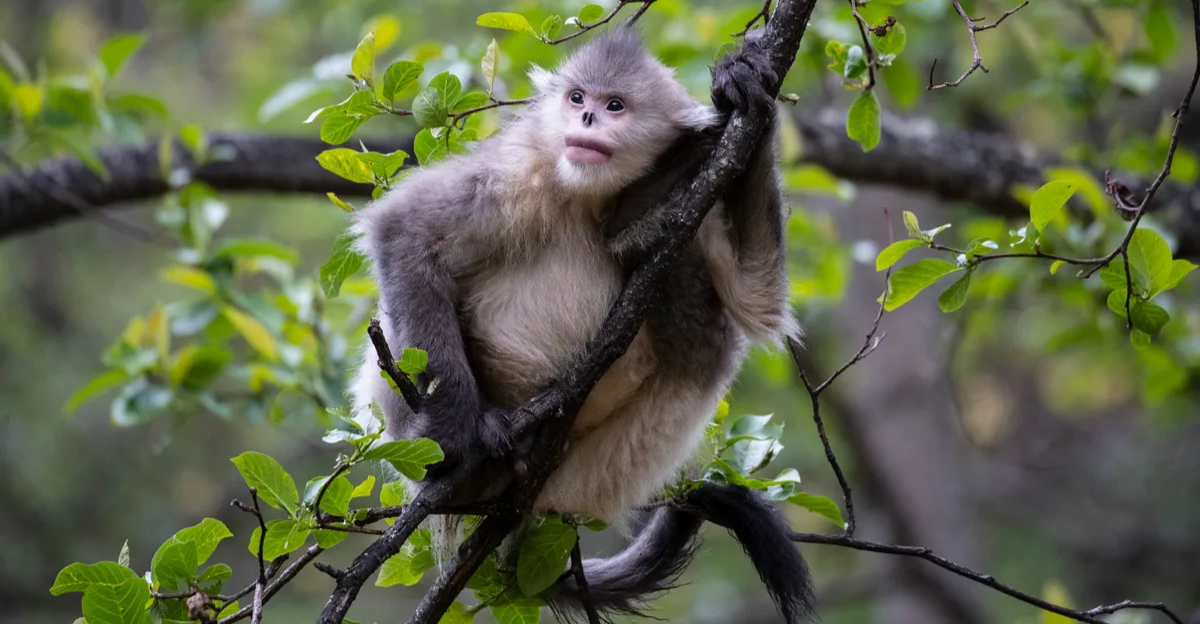
Primates are typically linked to tropical forests, not icy mountain peaks where oxygen runs low and temperatures plunge. Yet several extraordinary species have evolved to survive—and even thrive—in some of Earth’s highest, harshest habitats.
Armed with genetic mutations, dense fur, and remarkable physiology, these high-altitude primates are models of resilience. From snow-draped forests in China to Ethiopia’s rugged plateaus, they’ve adapted to environments where few mammals dare roam.
Here are seven remarkable primates that have evolved to live—and thrive—where few others can.
1. The Black-and-White Snub-Nosed Monkey
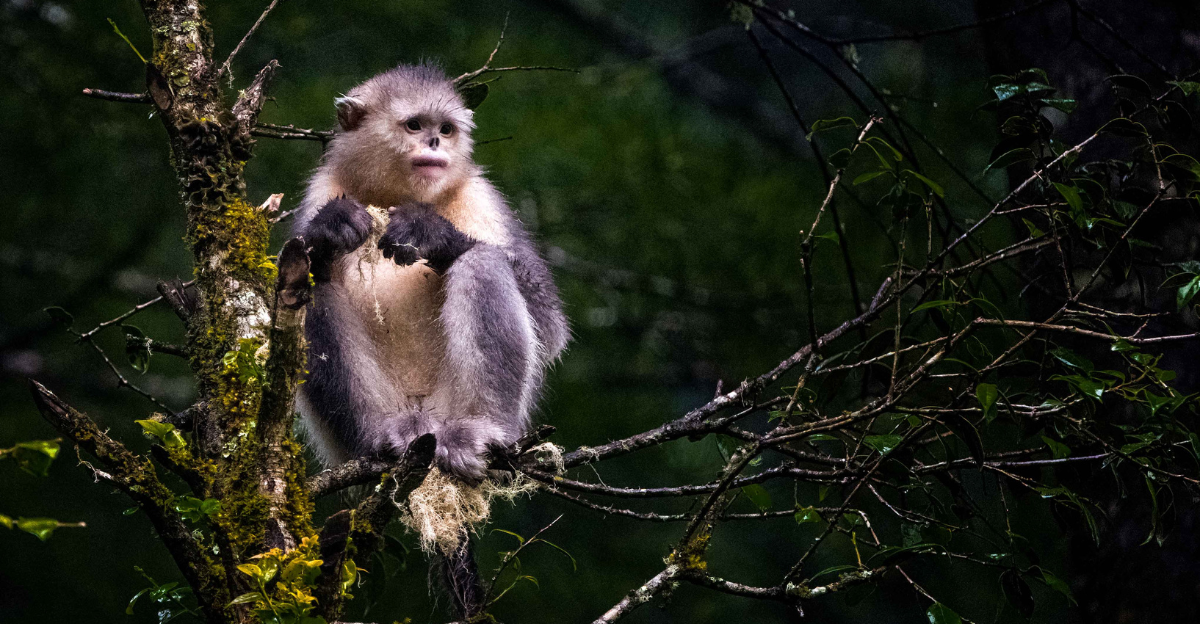
At over 4,700 meters (15,400 feet), the black-and-white snub-nosed monkey claims the highest known altitude of any non-human primate. Native to Yunnan province and Tibet, these elusive monkeys thrive in icy conifer forests where lichen is their lifeline. A unique DNA mutation helps them withstand chronic oxygen deprivation—an adaptation that puts them in a class of their own.
Fewer than 1,700 remain in the wild, making them critically endangered. Known for their striking looks and remarkable altitude tolerance, these monkeys offer rare insight into how mammals adapt genetically to some of the most unwelcoming terrain on the planet.
2. The Golden Snub-Nosed Monkey (Rhinopithecus roxellana)
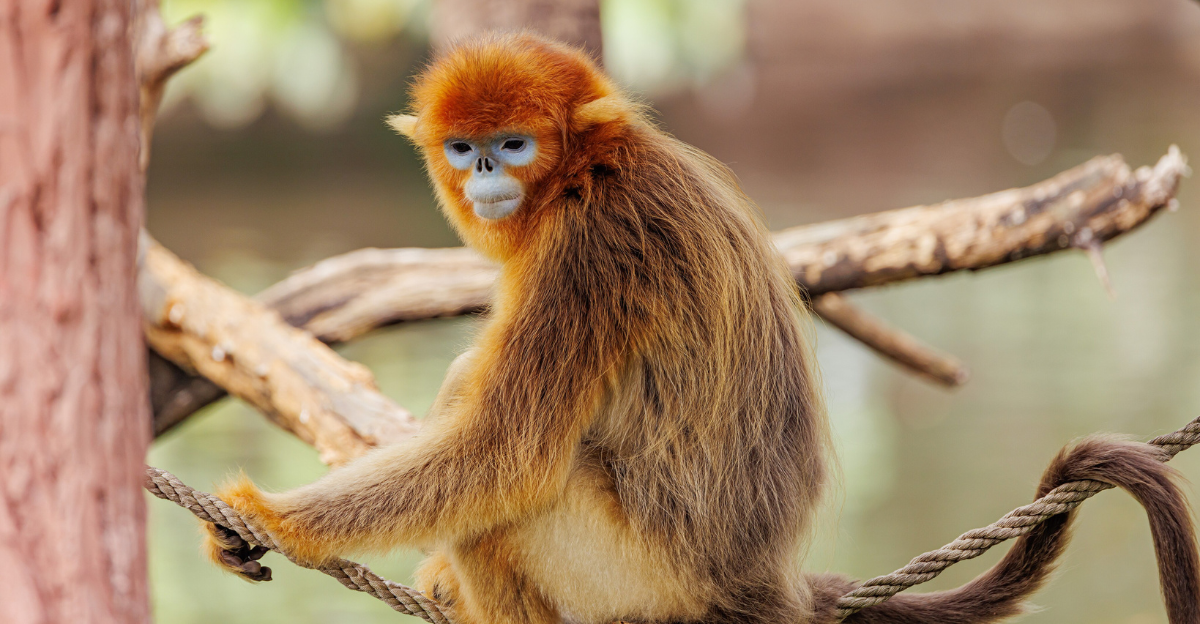
Clad in golden fur with icy-blue faces, golden snub-nosed monkeys live in central China’s cold, mountainous forests at elevations up to 3,400 meters (11,200 feet). Their dense fur shields them from winters that drag on for half the year, while their varied diet—pine needles, bark, lichen—lets them thrive where few primates can.
These social animals form groups as large as 600 during warmer seasons, a strategy that may help with warmth and protection. As their forests shrink, they’re becoming rare sights in the wild. Still, their resilience makes them one of nature’s most striking examples of cold-climate adaptation.
3. Mountain Gorillas (Gorilla beringei beringei)
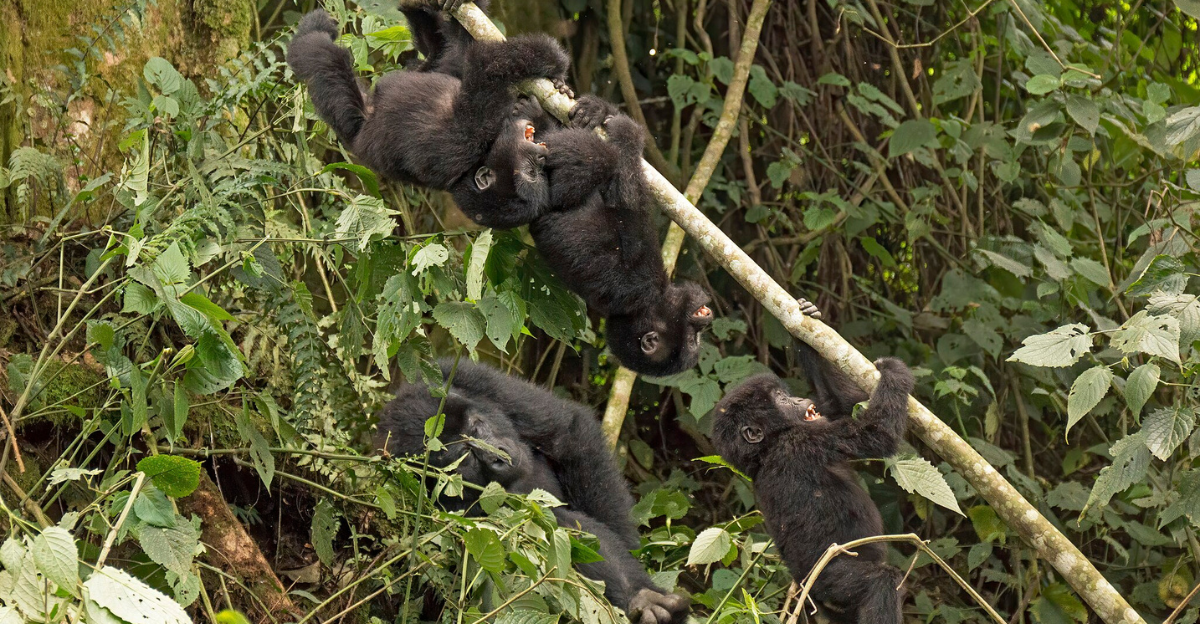
Mountain gorillas live at elevations up to 4,300 meters (14,100 feet) in central Africa’s volcanic mountains. Their thick, shaggy fur keeps them warm in forests blanketed by mist and chill. Despite their massive size—males can weigh up to 195 kg (430 lbs)—they feed mostly on leaves and stems.
Conservation efforts have helped their numbers rebound, but only around 1,000 remain. Human encroachment and disease continue to threaten them. These gentle giants exemplify how strength and adaptation go hand-in-hand, enduring both altitude and adversity in a region where few other large animals can survive long-term.
4. Gelada Monkeys (Theropithecus gelada)
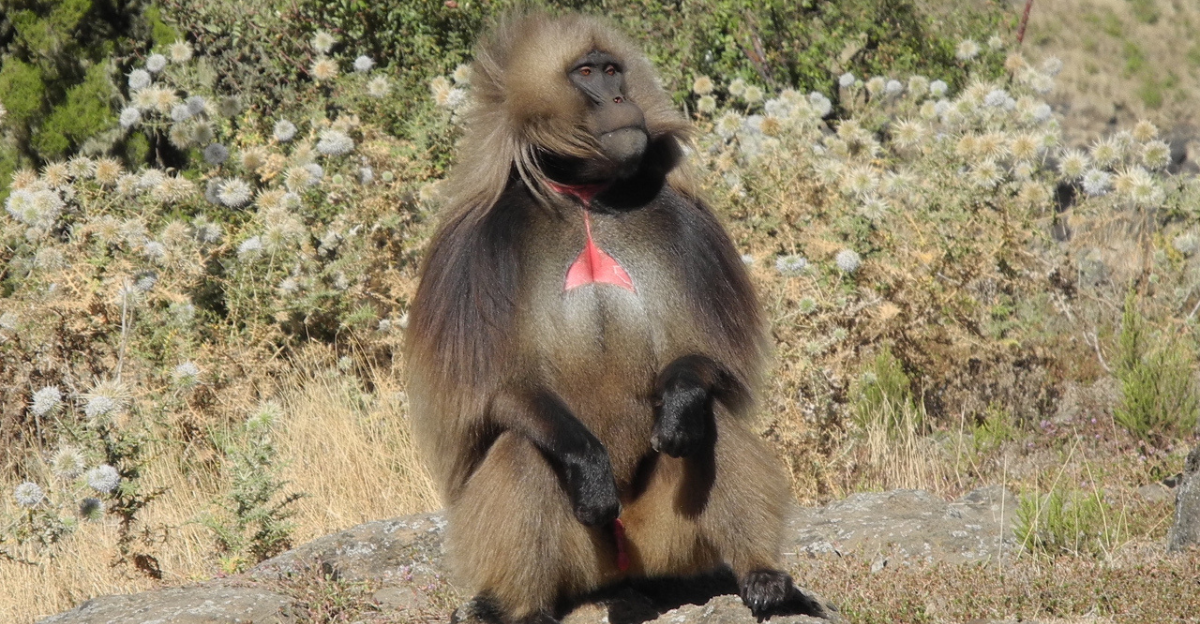
Found only in Ethiopia’s highlands, geladas, commonly known as the “ the bleeding-heart monkey”, are the world’s only primates that feed primarily on grass. Living at elevations up to 4,300 meters (14,000 feet), they’ve evolved to take in more oxygen per breath—possibly through larger lungs, rather than just increasing red blood cell counts. Their wide chests and distinctive red chest patches make them easy to identify.
Unlike forest-dwelling monkeys, geladas roam vast alpine meadows in massive troops. Their unique diet and physiology make them one of the most specialized high-altitude primates on Earth, surviving in environments that border on inhospitable for most mammals.
5. Arunachal Macaque (Macaca munzala)
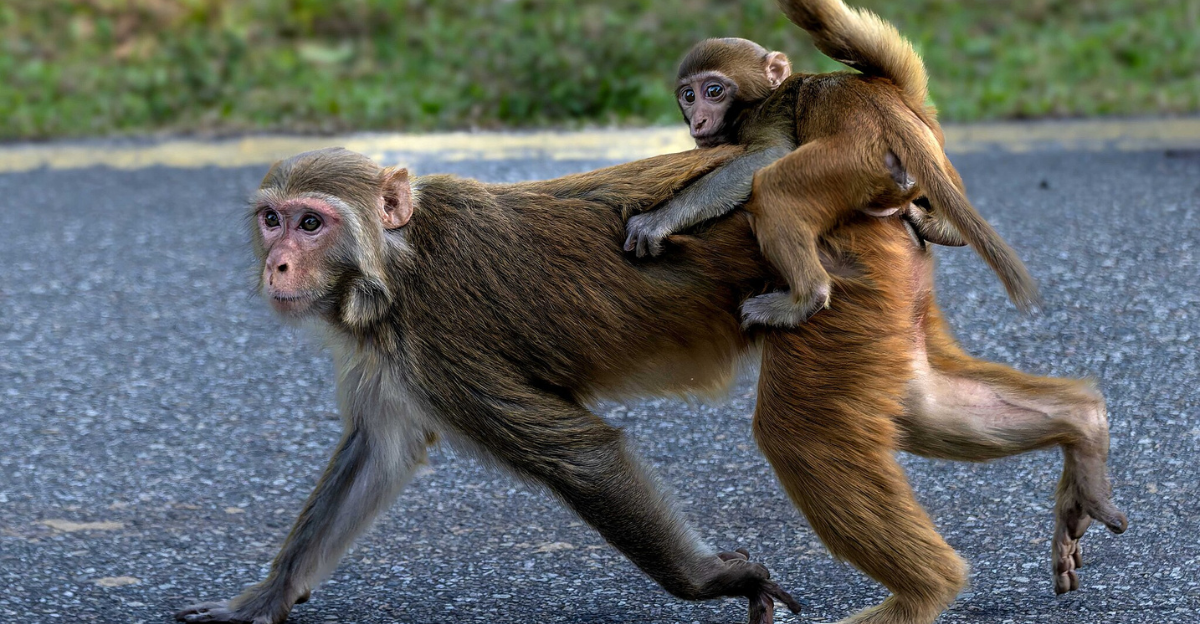
Only discovered by scientists in 2005, the Arunachal macaque lives in the remote Eastern Himalayas at heights between 2,000 and 3,500 meters (6,500–11,500 feet). Stocky with thick brown fur and short tails, they’re well-built for the region’s cold, rugged forests. Called “mun zala” or “deep forest monkey” by local Monpa people, these macaques face increasing threats from habitat loss and retaliatory killings over crop damage.
Already listed as Endangered, their population decline highlights how even newly discovered species aren’t immune to human pressures. Yet their ability to endure the Himalayan chill shows impressive environmental resilience.
6. Japanese Macaque (Macaca fuscata)
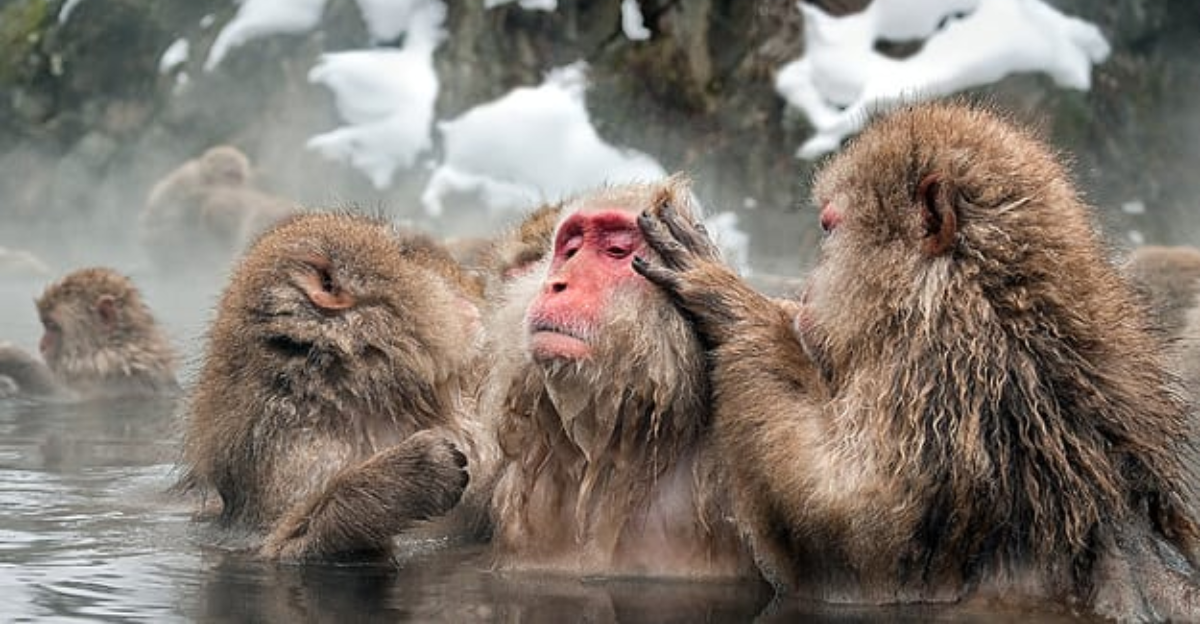
Famous for soaking in hot springs, Japanese macaques, famously known as the “snow monkey,” are also high-altitude survivors, living as high as 3,180 meters (10,433 feet). In Japan’s subalpine forests, winters are harsh—snowfall can last months, and annual temperatures average just 10.9°C.
These primates rely on thick coats and social grooming to stay warm. Northern macaques are larger than their southern counterparts, helping them retain heat in colder zones. They eat bark, buds, and even insects when food is scarce. Their adaptability and tolerance for snow make them the northernmost-living non-human primate—and a symbol of endurance amid extreme seasonal change.
7. Tibetan Macaque (Macaca thibetana)
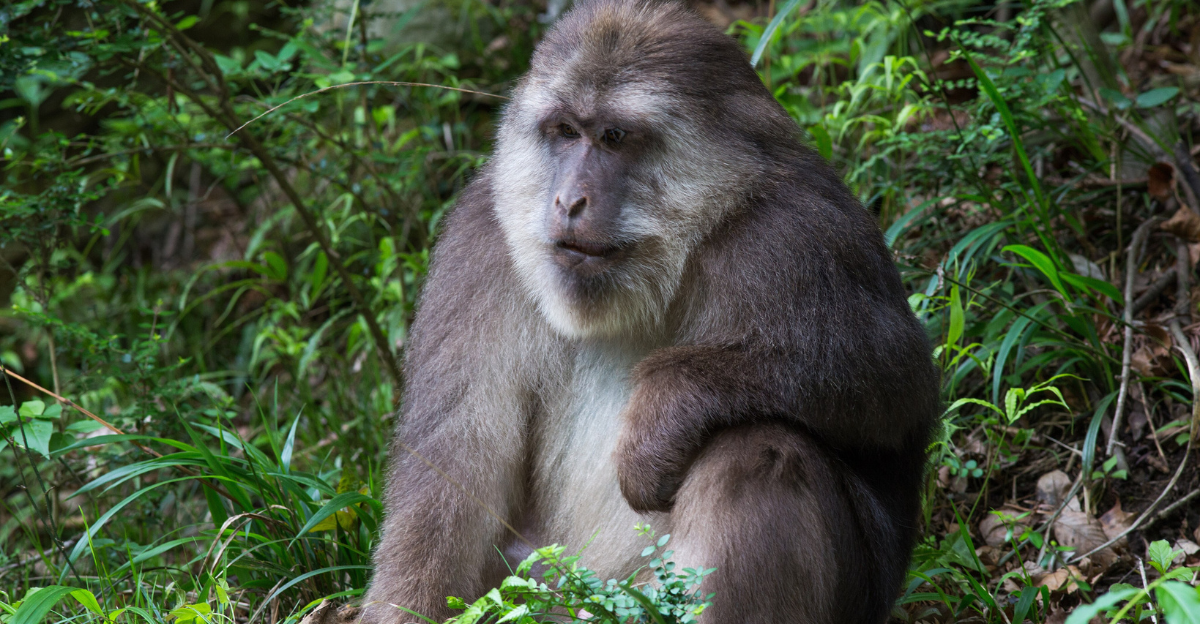
The Tibetan macaque, also known as the Chinese stump-tailed macaque, inhabits China’s mountainous forests at altitudes up to 2,500 meters (8,200 feet). As the largest macaque species, males can weigh up to 30 kg (66 lbs). Their thick brown coats and short tails reduce heat loss, a key trait for surviving cold highland climates.
Unlike their lowland relatives, Tibetan macaques are highly territorial and often travel in tightly knit groups. They play a vital role in their ecosystem, dispersing seeds and maintaining forest health. Despite their hardiness, they face habitat fragmentation and human disturbance, putting their future at risk.
How These Primates Beat the Altitude: The Science of Survival
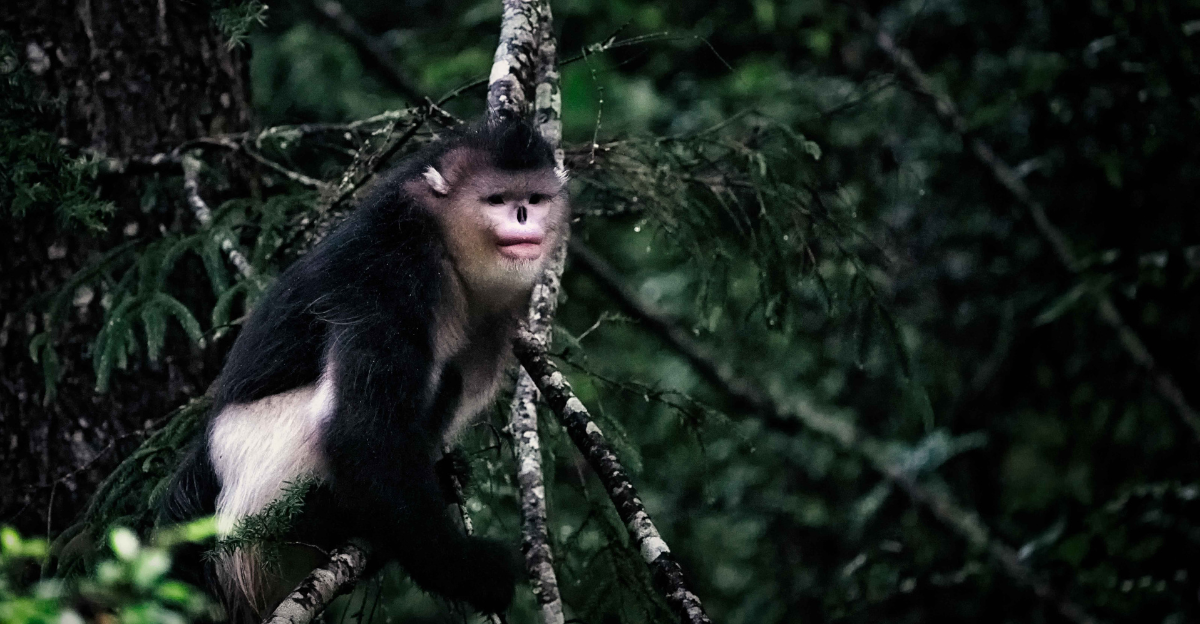
Surviving at high altitudes requires more than just thick fur—it takes a genetic edge. Some species, like the black-and-white snub-nosed monkey, possess gene mutations that improve oxygen processing. Geladas may breathe more efficiently due to larger lung capacity. Snub-nosed monkeys share adaptations like short noses and extremities to reduce heat loss.
A study by the Chinese Academy of Sciences found 19 genes under positive selection in high-altitude snub-nosed species, proving that evolution tailors life to even the toughest environments. These adaptations make them biological marvels—proof of nature’s power to innovate under pressure.
Under Threat: Can We Save These High-Altitude Primates?
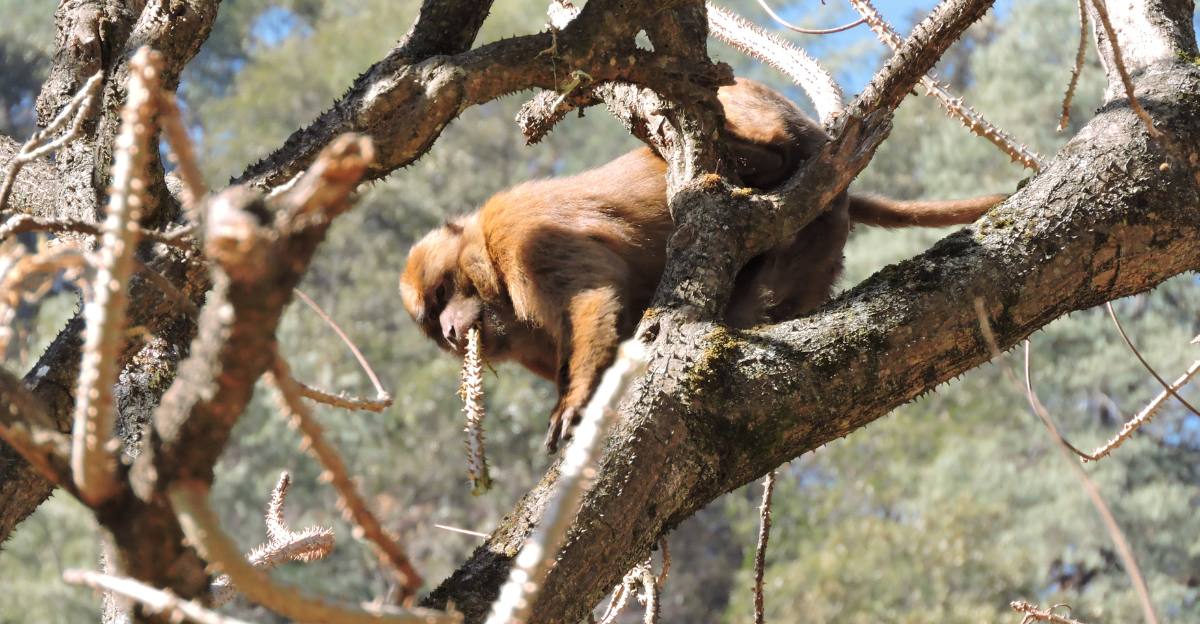
All seven high-altitude primates are under threat—from habitat destruction to climate change. As mountain habitats shrink or shift due to warming temperatures, species like the black-and-white snub-nosed monkey and mountain gorilla face increasingly limited space. Others, like the Arunachal macaque, suffer from direct human conflict. Even resilient species like the gelada and Tibetan macaque are not immune to pressures from agriculture and development.
Conservation is critical—not just to protect these animals, but to preserve the unique evolutionary insights they offer. Their survival may depend on how quickly we act to protect the world’s remaining alpine wilderness.
Explore more of our trending stories and hit Follow to keep them coming to your feed!

Don’t miss out on more stories like this! Hit the Follow button at the top of this article to stay updated with the latest news. Share your thoughts in the comments—we’d love to hear from you!







